Table of Contents
Cross Country Ski Clothing
Embarking on a cross country ski adventure? Cross country ski clothing is your first line of defense against the elements. It’s not just about staying warm; it’s about ensuring every glide is met with comfort and efficiency. Let’s dive into the world of ski attire and discover how it can elevate your snowy escapades.
Importance of Proper Ski Clothing
Why fuss over cross country ski clothing? The answer is simple: the right gear can make or break your experience. Proper attire shields you from the chilly air, wicks away sweat, and moves with your body. It’s the armor that battles the cold so you can focus on the thrill of the trail.
Factors to Consider When Choosing Ski Clothing
When selecting your cross country ski clothing, consider the weather, your activity level, and the duration of your expedition. The perfect balance between insulation and breathability is key. And remember, the fit should be snug yet flexible, allowing for a full range of motion as you conquer those snowy terrains.
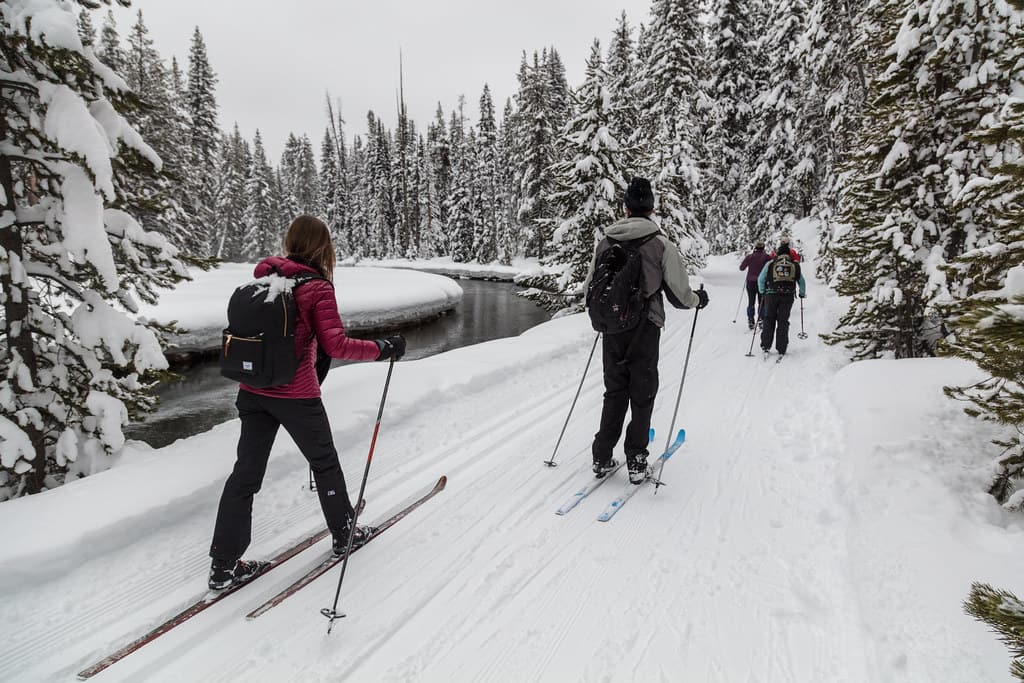
Understanding the Basics of Cross Country Ski Clothing
Embarking on a cross country skiing adventure requires not just skill and endurance but also the right attire. Your cross country ski clothing is a silent companion that can make or break your experience on the snow. Let’s dive into the essentials of what to wear when the winter wonderland calls.
Layers of Ski Clothing
Imagine you’re a cake, and each layer serves a unique purpose – that’s how we approach cross country ski clothing. The right layering system provides warmth, wicks away moisture, and shields you from the elements. But remember, over-layering can be just as detrimental as under-layering; you don’t want to feel like a walking marshmallow, do you?
Base Layer: Your Second Skin
The base layer is all about moisture management. It should hug your body comfortably, made from materials like merino wool or synthetic fibers that keep you dry and warm. Ask yourself, would you wear a cotton tee in a rainstorm? The answer is no, and the same goes for skiing.
Mid Layer: The Insulating Hero
Next comes the mid layer, the unsung hero that traps heat. Fleece or down jackets are popular choices, providing that sweet spot of insulation without the bulk. Think of it as your personal thermostat, adjustable with the day’s mood swings.
Outer Layer: Your Armor Against the Elements
The outer layer is your shield. Waterproof and breathable fabrics like Gore-Tex should be on your checklist, keeping you dry from both snow and sweat. It’s the guardian of your comfort, so invest wisely.
Material and Fabric Choices
When it comes to cross country ski clothing, the fabric is the unsung hero. The right material can be the difference between a day of bliss or an episode of “Frozen” (and not the fun, singalong kind).
Merino Wool: Nature’s Miracle
Merino wool is like the Swiss Army knife of fabrics – versatile, natural, and incredibly effective. It’s warm, breathable, and even has antibacterial properties, making it a top pick for base layers. Wearing merino wool is like having a personal climate control system.
Synthetics: The High-Tech Contenders
Synthetic fibers, the brainchildren of innovation, offer durability and moisture-wicking properties that rival natural fibers. They’re often more affordable and can take a beating while keeping you cozy and dry.
The Blends: Best of Both Worlds
Can’t decide between natural and synthetic? Why not both? Blended fabrics give you the warmth of wool with the resilience of synthetics, a match made in skiing heaven.
Essential Cross Country Ski Clothing Items
When you’re gliding through the frosty wonderland of cross country skiing, the right gear is as crucial as the skis under your feet. Cross country ski clothing isn’t just about making a fashion statement on the snow; it’s a sophisticated system designed to keep you warm, dry, and moving freely. Let’s dive into the core items that should be on every skier’s checklist.
Ski Jackets
At the forefront of your ski wardrobe is the ski jacket. But not just any jacket – it should be a beacon of warmth and breathability. The ideal cross country ski jacket blends insulation with ventilation, allowing you to stay toasty without overheating as you conquer those trails. Look for features like windproof fronts, stretchy panels for movement, and moisture-wicking materials to keep you as dry as freshly fallen snow.
Ski Pants
Next up are ski pants, the unsung heroes of your lower half. You’ll want a pair that offers freedom of movement and protection against the elements. Many skiers opt for softshell pants that provide a snug fit, repel water, and offer breathability. Remember, mobility is key, so consider pants with articulated knees and stretch fabrics.
Ski Gloves and Mittens
Your hands are your primary connection to your poles, so proper protection is a must. Ski gloves and mittens come in various styles, with some preferring the individual finger dexterity of gloves, while others opt for the shared warmth of mittens. Features like waterproof exteriors and insulated liners are a bonus, ensuring your hands stay warm and responsive.
Ski Socks and Boots
Finally, don’t overlook the power of a good pair of ski socks and boots. Socks should be high enough to protect from chafing, with moisture-wicking properties to keep your feet dry. Boots, on the other hand, need to be comfortable, supportive, and compatible with your skis’ binding system. A snug fit ensures efficient power transfer from your legs to the skis, enhancing your performance.
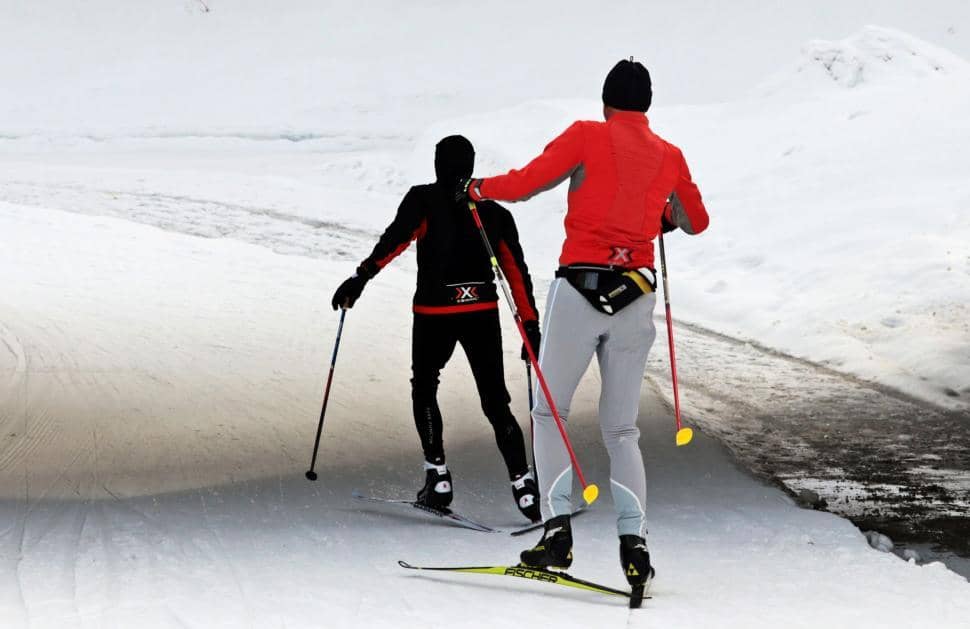
How to Choose the Right Cross Country Ski Clothing
Embarking on a cross country skiing adventure? The right gear can make or break your experience. Here’s how to ensure you’re snug and stylish on the slopes.
Factors to Consider
Before you dive into the sea of cross country ski clothing options, let’s anchor down some key factors:
- Weather Conditions: Are you gliding through a gentle flurry or bracing for a blizzard? Your clothing should correspond to the weather’s whims.
- Activity Level: Cross country skiing can range from leisurely to strenuous. Higher activity means more heat generated, so adjust your layers accordingly.
- Personal Comfort: What’s your chill threshold? Some like it hot, others prefer the cool – choose clothing that aligns with your personal thermostat.
Fitting and Sizing
When it comes to fit, think ‘Goldilocks’: not too tight, not too loose, just right. Here’s a quick guide:
| Garment | Fit |
|---|---|
| Jackets | Room for layers, but not baggy |
| Pants | Snug (but not restrictive) at the waist, freedom of movement in the legs |
| Gloves | Close-fitting for dexterity, with room for liners if needed |
Remember, improper fitting can lead to restricted movement or, worse, a chilly expedition. When in doubt, consult sizing charts or ask a professional.
Care and Maintenance of Cross Country Ski Clothing
Embarking on a cross country skiing adventure is as much about the thrill of the glide as it is about the gear that gets you there. But let’s not forget, cross country ski clothing is an investment in both performance and comfort. To ensure your gear remains in tip-top shape, let’s dive into the essentials of care and maintenance.
Cleaning and Storing
After a day on the trails, your ski clothing will likely be begging for a clean. But hold on—before you toss everything into the wash, check the labels for care instructions. Typically, a gentle cycle with cold water is your best bet, coupled with a mild detergent. Avoid fabric softeners, as they can degrade the material’s moisture-wicking capabilities. Now, when it comes to drying, resist the urge to wring out your garments. Instead, opt for air drying, which preserves the integrity of the fibers and maintains the waterproof qualities.
Storing your cross country ski clothing is just as crucial. Ensure everything is bone-dry to prevent mildew. Fold or hang items in a cool, dry place away from direct sunlight. Remember, UV rays are as harmful to your gear as they are to your skin!
Repair and Replacement
Even the most durable ski clothing can succumb to the rigors of the sport. Keep an eye out for signs of wear and tear, such as fraying or thinning fabric. Small holes or tears? They can often be patched up with a repair kit—a quick fix to extend the life of your gear. However, when the damage is beyond repair, or if you notice a decline in the clothing’s protective properties, it might be time to consider a replacement.
Remember, the longevity of your cross country ski clothing hinges on proper care. With regular cleaning, correct storage, and timely repairs, your gear will not only serve you well through countless snowy expeditions but will also be kinder to your wallet and the environment in the long run.
Top Brands for Cross Country Ski Clothing
When it comes to cross country ski clothing, the brand can make all the difference in performance and comfort. With a myriad of options out there, it’s essential to navigate the market with a discerning eye. Let’s dive into the elite brands that have become synonymous with quality and reliability in the world of cross country skiing.
Brand Reviews
First up, Salomon stands out for its innovative designs that cater to both novices and professionals. Their use of advanced materials that offer breathability and waterproofing makes them a go-to choice. On the other hand, Swix is renowned for their thermal regulation technologies, ensuring that skiers stay warm without overheating. The North Face, a household name, excels in sustainability, crafting gear from eco-friendly materials without compromising on durability.
Comparisons and Recommendations
When comparing these top-tier brands, consider factors such as insulation, moisture-wicking capabilities, and fit. A recent survey by SkiGearHub revealed that Salomon jackets are favored for their ergonomic fit, while Swix pants are lauded for their flexibility and range of motion. It’s recommended to prioritize features that align with your specific skiing conditions and personal preferences.
| Brand | Fit | Durability | Technology |
|---|---|---|---|
| Salomon | Ergonomic | High | Advanced |
| Swix | Flexible | High | Thermal Regulation |
| The North Face | Comfortable | High | Eco-friendly |
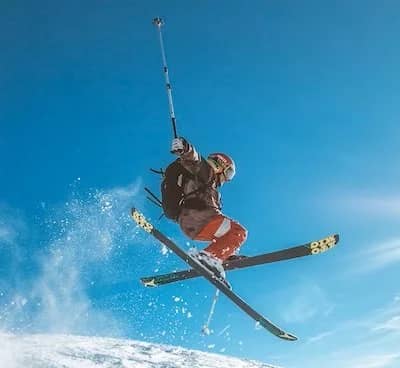
5 Hidden Alpine Treasures: Most Enchanting Ski Resorts in Europe
Unveil the charm of Europe’s lesser-known ski resorts in our guide to hidden Alpine paradises. From serene slopes to[…]

5 Key Balance Exercises for Superior Ski Performance
Discover 5 crucial balance exercises for skiing to improve stability and performance on the slopes. Enhance your skiing experience
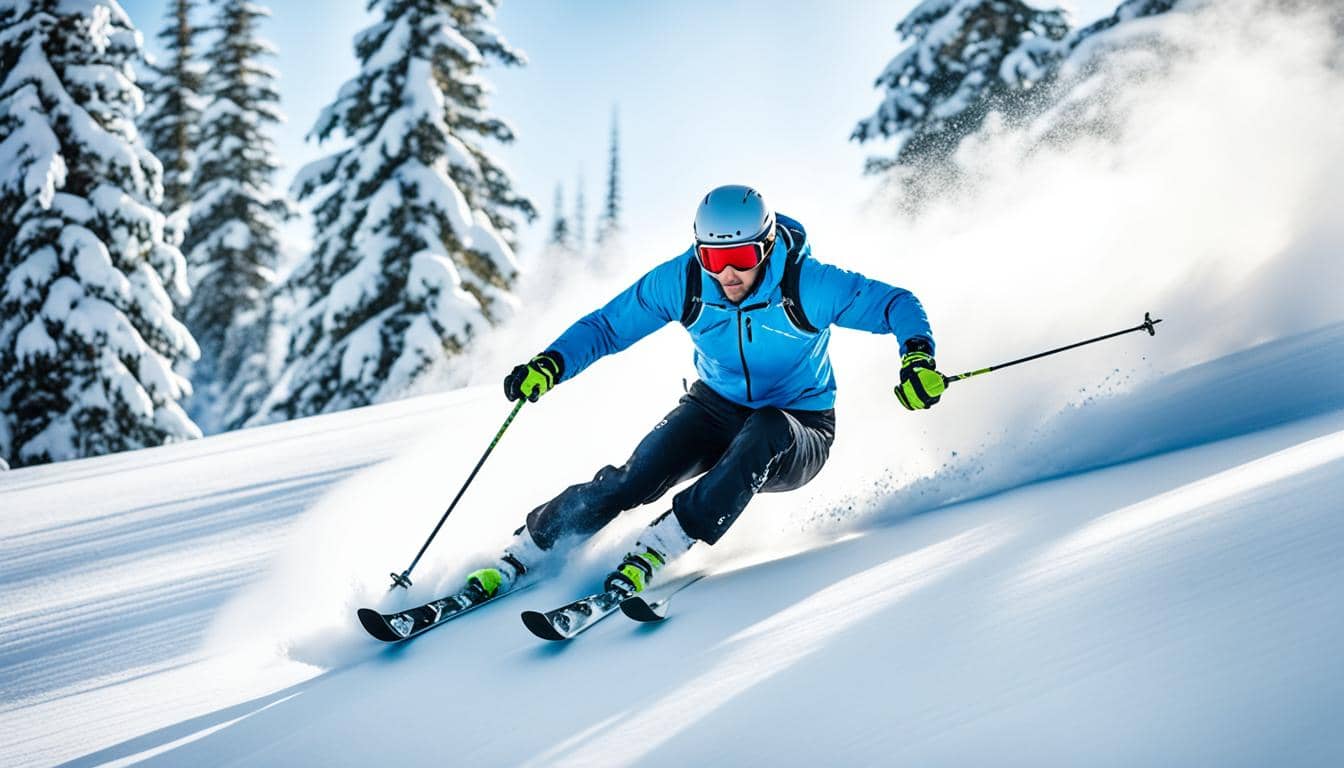
Alpine vs Nordic Skiing: Choose Your Slope Style
Explore the thrill and grace of the slopes as we delve into alpine vs nordic skiing – find out[…]
Conclusion: Making the Most Out of Your Cross Country Ski Clothing
As we glide to the finish line of our exploration into cross country ski clothing, it’s clear that the right apparel can elevate your experience from just another day on the snow to a truly memorable adventure. Whether you’re carving through a serene, snow-laden forest or powering up a challenging incline, your clothing is not just a layer of fabric—it’s your companion, your shield, and your comfort in the face of the frosty elements.
Remember, folks, cross country skiing is not just about endurance and technique; it’s also about smart preparation. The cross country ski clothing you choose is a testament to that. It’s about finding that sweet spot between warmth and breathability, freedom of movement, and protection. It’s the difference between braving the cold and embracing it.
So, before you step into your skis, take a moment to consider the insights we’ve shared. Reflect on the importance of layers, the wisdom in material choices, and the snug hug of a perfectly fitted ski jacket. And when you’re out there, feeling the crisp air kiss your cheeks, know that you’ve made the most out of your cross country ski clothing—your silent guardian in the snowy realm.
Now, go forth and ski with confidence, knowing you’re well-equipped to tackle the trails and create those winter tales worth telling around a warm, crackling fire. And remember, when in doubt, layer up, stay dry, and keep moving!
FAQs
Q1: What should I wear for cross country skiing?
When you’re cross country skiing, you’ll want to dress in layers. Start with a moisture-wicking base layer to keep you dry, add an insulating mid-layer to retain body heat, and top it off with a windproof and water-resistant outer layer. Don’t forget a hat or headband to protect your ears, gloves or mittens, and warm socks. Remember, it’s easier to remove layers if you get too warm than to add them if you’re cold.
Q2: How should cross country ski clothing fit?
Cross country ski clothing should be snug but not tight, allowing you full range of motion. It’s a balance between being fitted enough to trap body heat and loose enough to layer comfortably. Avoid clothing that is too baggy as it can catch wind and slow you down. When trying on ski clothing, mimic some ski movements to ensure you have the mobility you need.
Q3: How to care for and maintain cross country ski clothing?
To keep your ski clothing in top shape, follow the care instructions on the label. Most ski garments should be washed in cold water and hung to dry. Avoid fabric softeners and bleach, as they can degrade the fabric’s properties. For waterproof items, you may need to use a special detergent and occasionally re-waterproof them with a spray. Store your ski clothing in a dry place away from direct sunlight to prevent fading and material breakdown.
Q4: What are the top brands for cross country ski clothing?
There are several reputable brands known for quality cross country ski clothing. Some of the top ones include Salomon, Swix, and Craft. Each brand has its strengths, so consider what’s most important to you—be it warmth, breathability, or style—and check out reviews to see which brand aligns with your needs.
Q5: What is the importance of proper ski clothing in cross country skiing?
Proper ski clothing is crucial for comfort and performance. It keeps you warm and dry, protects you from the elements, and can even prevent injuries by allowing proper movement. Inadequate clothing can lead to hypothermia or frostbite in cold conditions, and overheating in milder weather. Investing in the right gear will make your experience much more enjoyable and help you ski more effectively.
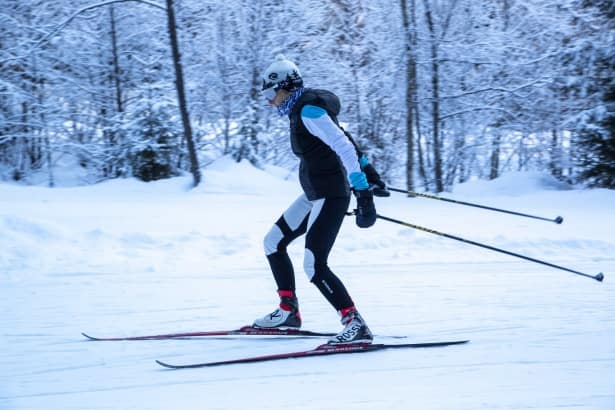




No responses yet